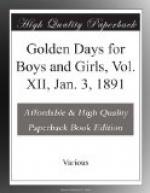He set up objects of worship and established shrines for them at two places in his kingdom, Bethel and Dan.
Bethel was located in the tribe of Benjamin’s territory, but had been taken as part of the land embraced in the revolt of the ten tribes. The name meant the house of God, and was so called by Jacob at the time of his vision (Gen. 28: 11-19.)
As long ago as Abraham’s time, an altar had been built here (Gen. 12: 8.) Samuel had also judged Israel here (1 Sam. 7: 16.) It was, therefore, shrewdly selected, for the people of those days were readily and deeply impressed with the sacred associations of places, especially old places.
The other place, Dan, was in the extreme northern part of the land, so that the expression from Dan to Beersheba means from one end of the land to the other, north to south.
There was no city here at this time, but at a spot about four miles from where the city of Dan was afterwards located, there is a remarkable cave in one of the ridges at the base of Mount Hermon. This cave had been a sanctuary or place of worship from the earliest times (Gen. 14: 14.)
Having thus selected the localities, Jeroboam set up there the objects for their worship. It was not his intention so much, perhaps, to teach the people the worship of images—he would hardly have ventured to do that in its bald form—but it was his intention that these calves or oxen should be the symbols representing the presence of God just as the ark and the cherubim did in the temple.
They were made of wood and covered with plates of gold. The ox was an old object of worship. Aaron had set it up in the wilderness, and Jeroboam used almost the very words of Aaron so long before (Ex. 32: 4).
The Israelites were made familiar with this image in the decorations of the temple of Solomon, including colossal cherubim. Also the great molten sea of brass was supported upon oxen of the same material.
THE DAMAGING RESULTS.
“And this thing became a sin:
for the people went to worship before
the one, even unto Dan.
“And he made a house of high places,
and made priests of the lowest
of the people, which were not of the sons
of Levi.”
It was hardly to be expected that any other result than that of sin would come from this course. It was, to begin with, a violation of the second commandment, and if Jeroboam did not intend to teach Israel the worship of false gods, this was the result of it, and repeatedly he is spoken of in the Scriptures as the one that did cause Israel to sin.
So completely were the people carried away with this bad current, that they preferred to get as far away from Jerusalem as possible, and went even to Dan to engage in their idolatrous practices.
At both these places where he had set up the calves, he built houses for them. Originally and commonly houses of worship were built upon high places, so that this expression “high places” came to be a description of the house itself.




